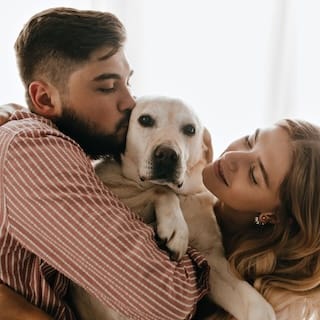Caring for Your Senior Pet's Mobility: Practical Exercises and Supportive Measures for Aging Companions

The journey into a pet's senior years often comes with its set of hurdles, mobility challenges being a significant one. Factors like arthritis, muscle loss, and diminished flexibility can contribute to a noticeable decline in their ability to move around with the same vigor they once showcased. These ailments can lead to discomfort and restrict their participation in activities that were previously performed effortlessly. Early recognition of these signs is imperative in adopting targeted care strategies aimed at improving your pet's mobility and overall well-being. Insightful discussions with veterinary professionals can further enlighten pet owners about adaptive measures suitable for their elderly companions.
Understanding Age-Related Mobility Changes in Senior Pets
Regular physical activity remains a cornerstone in preserving the vitality of senior pets. Crafting low-impact exercises specifically tailored to address the needs of your aging friend can significantly bolster their mobility and joint health. Gentle activities including but not limited to controlled walks, swimming sessions in temperate waters, and stretching exercises are invaluable in maintaining muscle tone and flexibility while minimizing undue stress on weary joints. Establishing a consistent exercise regimen adapted to the capabilities of your senior pet plays a crucial role in invigorating their day-to-day mobility. Tails' Talks emphasizes the importance of aligning these physical routines with professional recommendations to ensure they contribute positively to your pet’s longevity and well-being.
Tailored Exercise Routines for Senior Pets
The introduction of supportive aids alongside thoughtful modifications within the home environment can prove immensely beneficial for pets grappling with mobility limitations. Simple yet effective interventions such as installing ramps or steps facilitate easier access to favorite elevated spots. Provision of orthopedic bedding enhances comfort during rest periods, while implementing non-slip mats across common living spaces can significantly reduce the risk of falls. Furthermore, harnesses or appropriately sized slings can offer indispensable support during movement by securing a pet’s weight evenly, thus ameliorating confidence in navigating their surroundings.
Related Article: The Epistemology of Pet Care: The Knowledge Structure Underlying Effective Animal Wellness
Supportive Aids and Home Modifications for Limited Mobility
A crucial component of senior pet care lies in diligent monitoring of their comfort levels, coupled with necessary adjustments in their care regimen as needed. Keen observations relating to alterations in gait, shifts in behavior patterns, or responses to physical exertion are vital indices of your pet’s current mobility state. Rapidly addressing any detected signs of discomfort through vet consultations facilitates the fine-tuning of their personalized care plan. This proactive measure ensures that any emergent issues are adeptly managed, thereby fostering a conducive environment for your aging pet’s thriving.
An optimized nutrition plan acts as the foundation in safeguarding the joint health and enhancing the overall mobility among senior pets. Incorporating essential nutrients such as omega-3 fatty acids for anti-inflammatory effects, alongside glucosamine and chondroitin for improved joint lubrication and cartilage health is recommended. Additionally, maintaining an ideal body weight through calibrated portion control minimizes unnecessary stress on joints thereby promoting easier movement. Tails' Talks advocates for regular consultations with veterinary nutritionists to tailor dietary regimes that meticulously cater to the nuanced needs of senior pets.
Monitoring Comfort and Adjusting Care for Senior Pets
Adapting the routine activities of your senior pet to better accommodate their evolving mobility needs is paramount in ensuring they continue engaging in life joyfully. Ensuring food and water bowls are readily accessible without necessitating strenuous effort on their part, employing gentle grooming techniques sensitive to their comfort levels, and reorganizing living spaces for hassle-free navigation encapsulate the essence of compassionate care for aging companions. Furthermore, scheduled veterinary examinations lay the groundwork for early detection and intervention against potential age-related conditions potentially impairing mobility.
Frequently Asked Questions
As pets age, they often experience mobility challenges due to factors like arthritis, muscle loss, and reduced flexibility. These changes can lead to discomfort and limit their ability to engage in activities they once enjoyed. Early recognition of these signs is crucial for implementing effective care strategies to enhance their mobility and overall well-being.
Tailored exercise routines are essential for enhancing mobility and joint health in senior pets. Low-impact activities such as controlled walks, swimming, and stretching help maintain muscle tone and flexibility while minimizing stress on their joints. Establishing a consistent regimen aligned with professional guidance can significantly improve your pet's quality of life.
Supportive aids like ramps, orthopedic bedding, and non-slip mats can greatly assist senior pets facing mobility limitations. These modifications make it easier for them to access favorite spots and reduce the risk of falls. Additionally, harnesses or slings provide essential support during movement, boosting their confidence in navigating their environment.
Monitoring your senior pet's comfort involves observing changes in their gait, behavior, and reactions to physical activity. Noticing any signs of discomfort is vital for adjusting their care plan. Consulting with a veterinarian promptly can help address emerging issues, ensuring your aging pet receives the appropriate support for a comfortable life.
To support joint health in older pets, an optimized nutrition plan is essential. Incorporating omega-3 fatty acids for anti-inflammatory benefits, along with glucosamine and chondroitin for joint lubrication, is recommended. Maintaining an ideal body weight through portion control also minimizes stress on joints, promoting easier movement and overall well-being.






